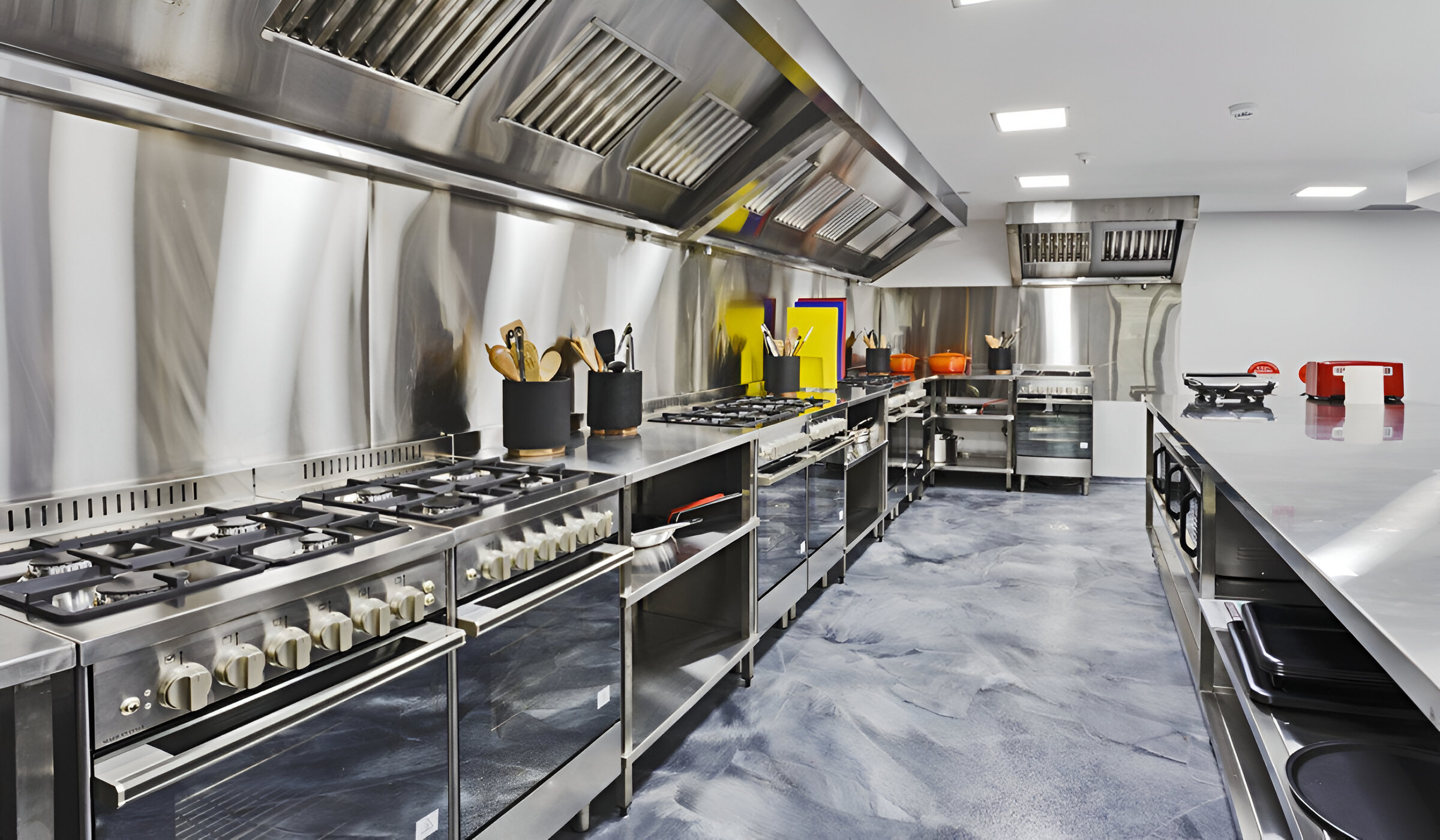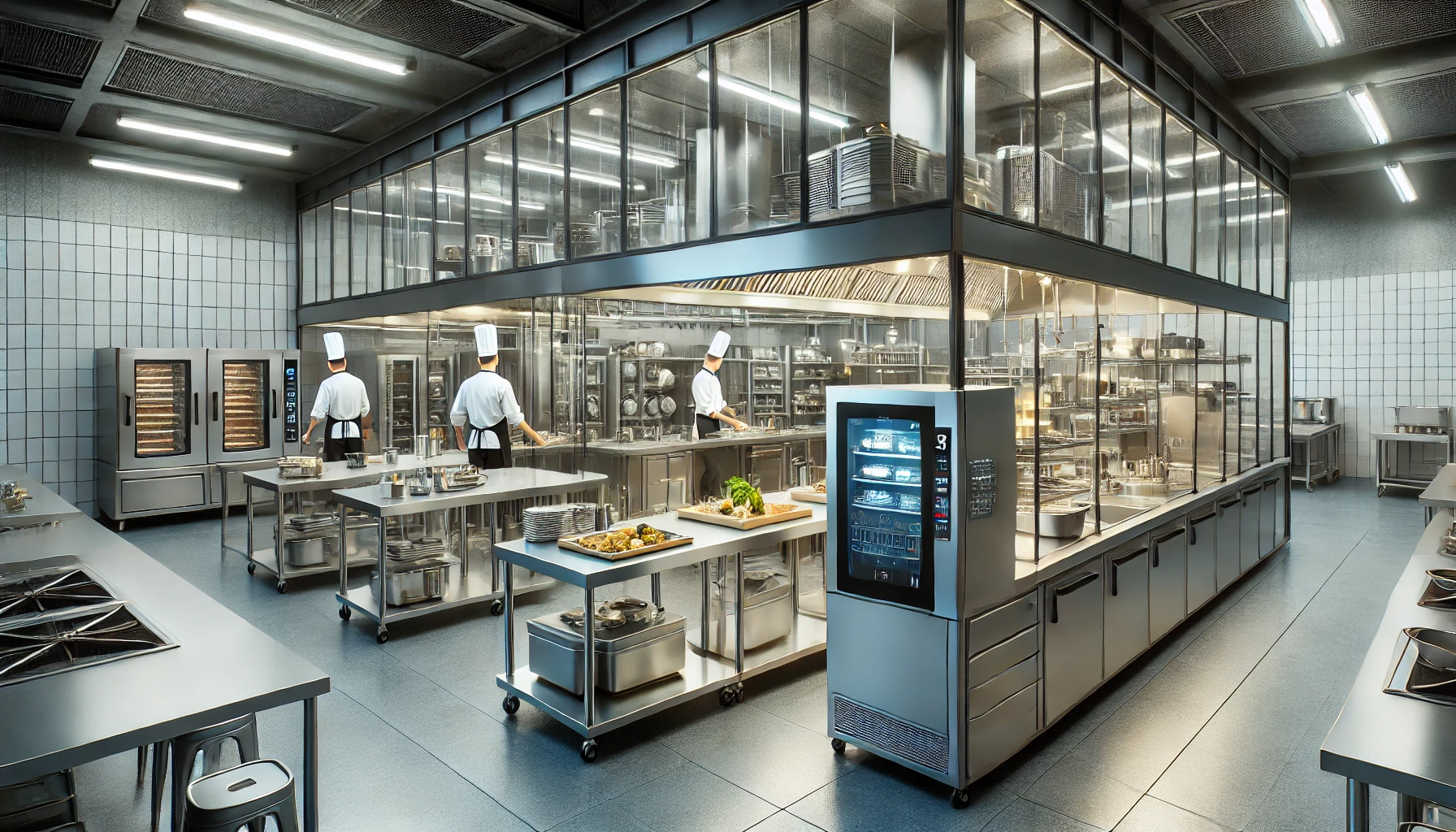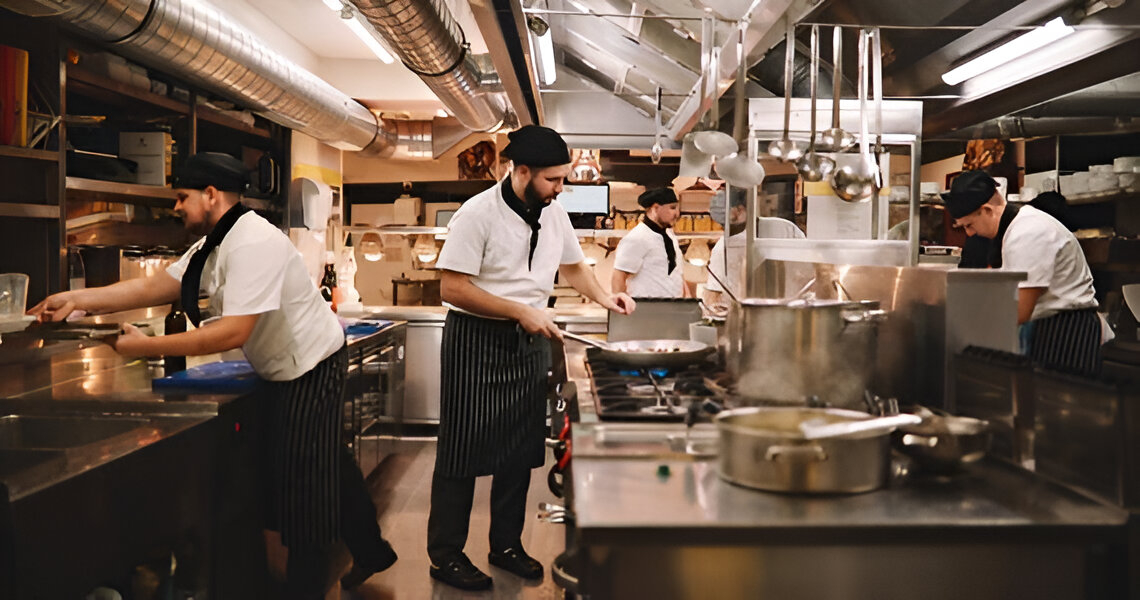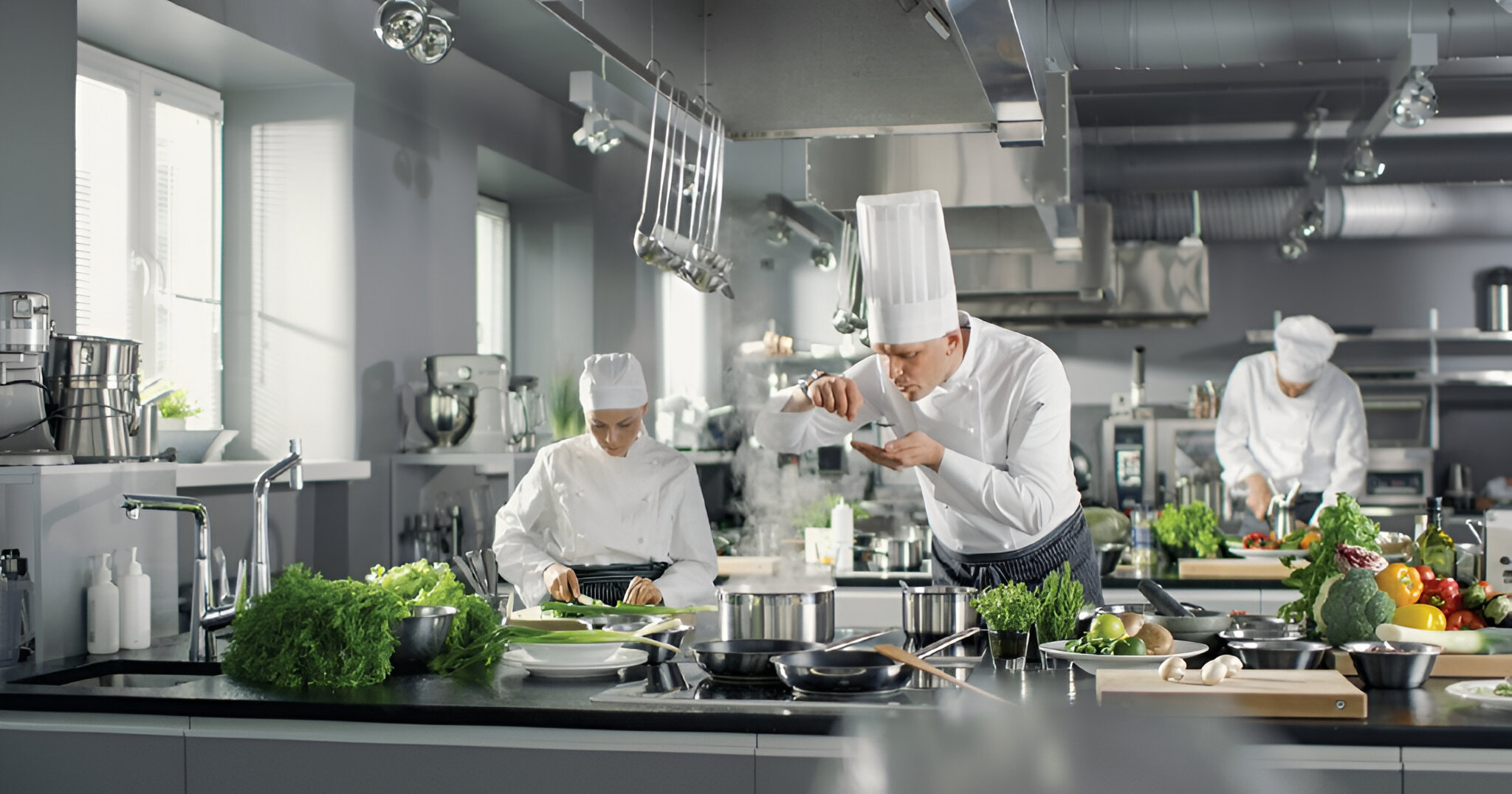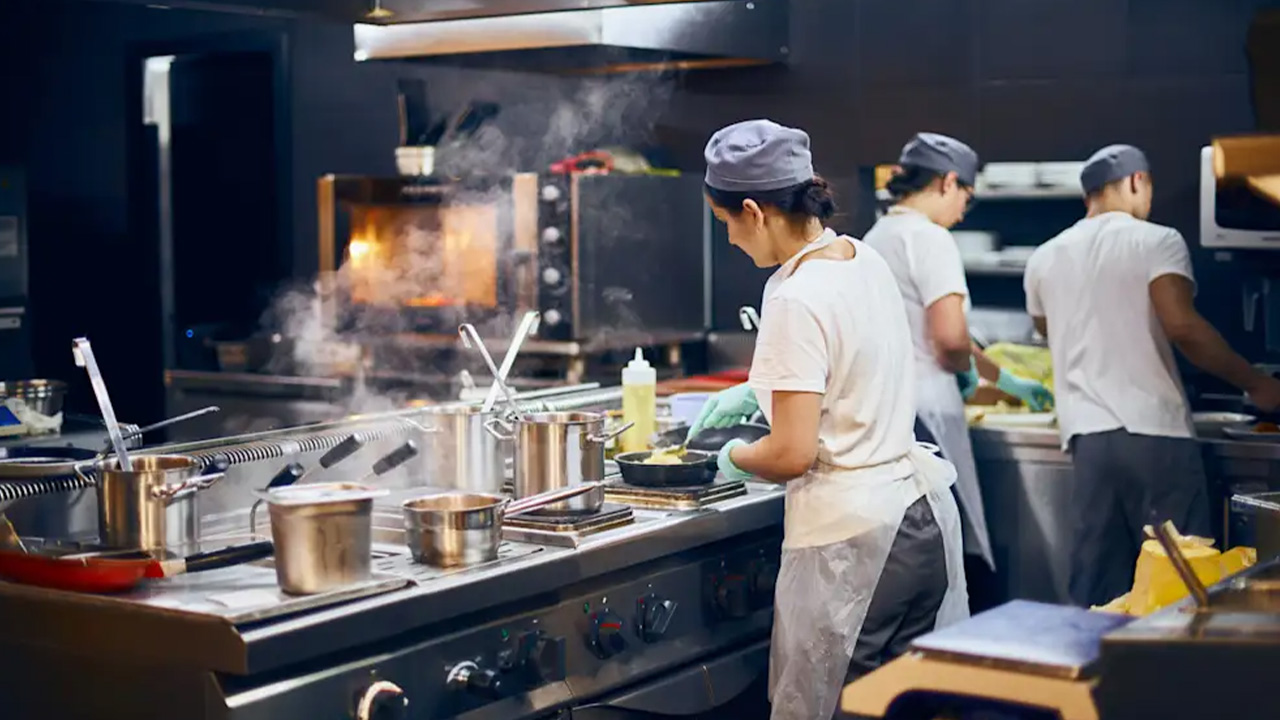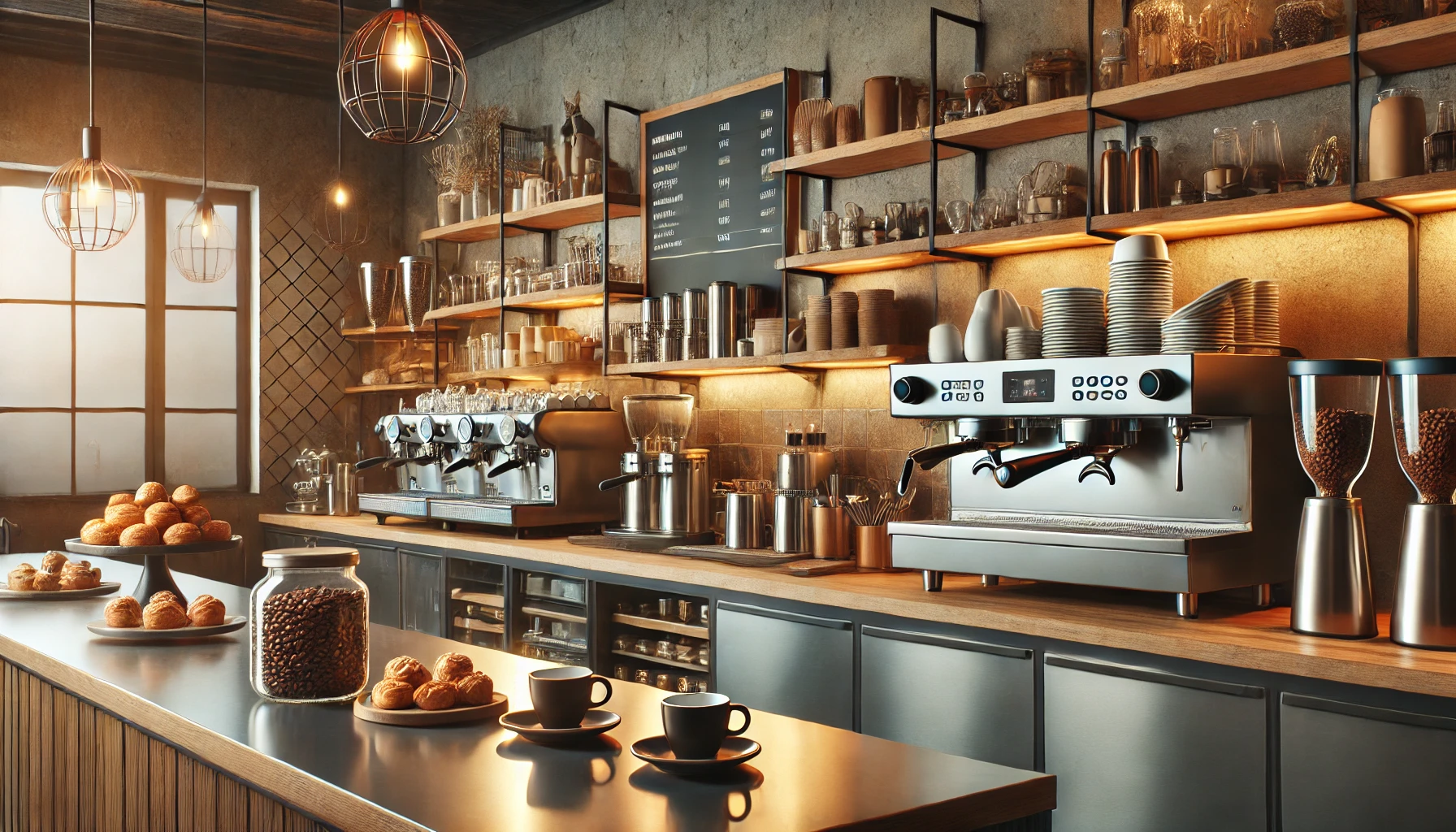How to Build a Profitable Cloud Kitchen Business
The cloud kitchen business model is changing the food industry. It takes advantage of the rising need for online food delivery. This new way removes the need for a physical store, which helps lower startup costs a lot. By concentrating on food preparation and delivery, people starting this business can reach more customers and run their operations more smoothly.
Understanding Cloud Kitchens
A cloud kitchen is a special type meant for making food just for delivery. It is different from regular restaurants because it does not have dining areas or serve customers in person. This setup helps chefs to concentrate on making tasty meals while using technology and delivery services to get the food to people.
These kitchens are often called ghost kitchens or virtual restaurants. They work only through online ordering platforms and delivery apps. This way of selling food helps with better menu choices, smoother operations, and lower costs than regular restaurants.
The Evolution of Cloud Kitchens in India
The growth of cloud kitchens in India is due to the fast-growing food delivery market and changing customer tastes. People love the convenience of ordering food online. This has led to a demand for different kinds of food, helping cloud kitchens succeed.
As rental and running costs go up in big cities, traditional restaurants are under stress. Cloud kitchens are a cheaper option. They allow food business owners to start with less money and lower ongoing expenses.
Shared kitchen spaces are becoming popular in India, too. They give new restaurant owners access to great kitchens without the high costs of rent and complicated setups. This teamwork makes it easier for new food businesses to start.
Key Components of a Cloud Kitchen Model
A successful cloud kitchen business model focuses on a smooth process. This process puts online orders and quick fulfilment first. It starts with a menu that is well-made. This menu should fit the likes of the target audience and be good for delivery.
Marketing is very important in today’s online world. Cloud kitchens are sometimes called dark kitchens because they don’t have a physical storefront. They need online platforms to connect with customers. It is really helpful to partner with popular food delivery apps and run targeted social media campaigns. A strong system for online ordering also helps drive orders.
In the kitchen, good operations are very important. A well-organized space helps with food preparation and order flow. This ensures fast delivery and good food quality. Technology tools like POS systems and kitchen display systems are useful. They help automate tasks and reduce mistakes.
Preparing for Your Cloud Kitchen Venture
Before you start your cloud kitchen, you need to plan carefully. First, find your niche. Think about what kind of food you want to specialize in. Do some market research to know who your target audience is. Check out your competitors too. It’s important to have unique menu items to draw in customers.
Keep in mind that you don’t have a physical storefront like regular restaurants to get foot traffic. Your online presence will be your storefront. A website that is easy to use, interesting social media pages, and good partnerships with online food delivery platforms are very important for your success.
Identifying Your Niche in the Food Delivery Market
The online food delivery market is full of chances, but it’s important to find your special spot. What types of food will make your cloud kitchen stand out? You might think about focusing on a specific type of cuisine, dietary need, or a unique meal category like gourmet sandwiches or healthy bowls.
After you know what you will offer, look into different delivery platforms and see which ones are popular in your area. Joining a few platforms can help you reach more potential customers. But keep in mind that each platform has its fees and rules. It’s essential to evaluate them carefully.
It’s also very important to understand your target audience. Look at their age, ordering habits, and likes within your niche. This valuable information will help you set menu prices, create marketing plans, and make better business choices.
Legal and Regulatory Requirements in India
Operating a cloud kitchen in India requires compliance with food safety and hygiene laws, including obtaining an FSSAI license. Additionally, a trade license from the local municipal corporation is necessary. Keeping detailed records of invoices, inventory, and staff health is crucial for inspections and audits to demonstrate compliance and ensure customer safety.
Essential Equipment and Technology Stack
A good kitchen is crucial for your business. Invest in high-quality commercial kitchen equipment like ovens, stoves, fryers, refrigerators, and freezers that suit your menu and serving capacity. A reliable POS system is essential for managing online orders and inventory efficiently.
Technology extends beyond the kitchen. Optimize delivery routes and monitor driver performance with delivery management software. Utilize online marketing tools and social media to expand your brand reach. Stay ahead of competitors by leveraging these technologies.
Kitchen Equipment Essentials for Efficiency
Efficiency is key in your commercial kitchen. Optimize layout for easy movement between stations, reducing wasted steps and enhancing workflow. Choose equipment tailored to your menu and output volume. Energy-efficient appliances can cut costs and benefit the environment. Regular maintenance prevents breakdowns and ensures smooth operations.
Technology Solutions for Order Management and Delivery
Managing online orders is challenging without proper technology. Consider using a cloud kitchen POS system that integrates with popular delivery apps to streamline order processing. A kitchen display system (KDS) replaces paper tickets, displaying orders and preparation details for kitchen staff efficiently. For optimized delivery, utilize delivery management software for route optimization and real-time tracking, enhancing customer satisfaction and loyalty.
Designing Your Cloud Kitchen Space
Optimizing your kitchen space is important. It helps you work faster and save money. A good layout lets you move smoothly from food preparation to packaging and pickup. Think about how much storage you need, how easy it is to get to your equipment, and where to set up different cooking tasks.
Good ventilation is key in a cloud kitchen. Cooking fumes and heat can affect food quality and the comfort of your staff. Make sure you have a good exhaust system. This will help remove heat and odours. It will also create a safe and clean workplace.
Optimizing Kitchen Layout for Speed and Quality
A smart kitchen layout prioritizes speed and food quality. Divide the kitchen into specific work areas for different tasks: preparing ingredients, cooking, assembling, and packaging. This setup minimizes contamination and streamlines workflow.
Place equipment strategically for easy access. Keep ovens and ranges within reach and store ingredients near prep areas. Ensure ample counter space for plating, packaging, and labelling orders.
Good lighting is essential for food preparation and quality control. A well-lit kitchen promotes cleanliness and reduces errors.
Safety and Hygiene Standards to Follow
Maintaining high hygiene standards in cloud kitchens is crucial for food safety and brand trust. Establish a rigorous cleaning schedule, sanitize all surfaces regularly, and train staff on proper hygiene practices. Prioritize pest control by regularly checking for pests and collaborating with a professional pest control company for prevention.
Step-by-Step Guide to Launching Your Cloud Kitchen
A successful launch needs good planning and execution. Start by making a detailed business plan. This plan should include your idea, target market, money expectations, and marketing plan. If you need money, make sure to find funding. Think about startup costs like equipment, rent, and initial inventory.
Research well to set up a dependable supply chain for getting high-quality ingredients. Build strong ties with your vendors. This helps ensure you have what you need, and you may also be able to get better prices.
Step 1: Conduct Market Research and Define Your Concept
Before launching, conduct thorough market research to identify food trends, assess competitors, and understand your target audience. Define your niche by catering to health-conscious individuals, busy professionals, or families seeking convenient meal choices. Consider local demographics, income levels, and competitor analysis to tailor your menu, pricing, and marketing strategy. Gather insights from online surveys, social media polls, and discussions with local food influencers to refine your concept based on customer preferences.
Step 2: Develop Your Menu with an Eye on Logistics
Creating a delivery-friendly menu is crucial. Choose dishes that remain fresh, are easy to pack, and maintain their appearance during transportation. Ensure ingredients are readily available for a smooth supply chain.
Consider the logistics of food delivery when selecting menu items. Opt for dishes that are simple to assemble and travel well, avoiding ingredients that lose quality quickly.
Use attractive packaging to keep food warm and enhance presentation. Eco-friendly packaging can appeal to environmentally conscious customers and boost your brand image.
Step 3: Secure Funding and Finalize Location
Starting a cloud kitchen requires sufficient funding for equipment, rent, inventory, marketing, and operational costs. Choose a strategic location near target customers and popular delivery areas. Explore funding options like personal savings, loans, or partnerships. Develop a comprehensive business plan showcasing your unique concept, market potential, and revenue projections.
Step 4: Set Up Your Kitchen and Supply Chain
After securing funding and a location, focus on setting up a quality kitchen space with durable commercial appliances that match your menu needs.
Establish a reliable supply chain for fresh ingredients by partnering with trustworthy vendors. Maintain strong vendor relationships through clear communication, timely payments, and mutual respect.
Implement inventory management practices to minimize waste and control costs. Monitor stock levels closely, order judiciously, and rotate ingredients systematically to maintain freshness.
Step 5: Launch Marketing and Branding Efforts
With your kitchen set up, focus on building a strong brand identity that resonates with your audience. Capture enticing food photos and consider professional food styling for presentation.
Establish a robust online presence with a user-friendly website for ordering, engaging social media profiles, and collaborations with bloggers or influencers. Offer promotions to attract new customers.
Explore local marketing strategies such as distributing flyers or partnering with nearby businesses. Participate in food festivals to connect with customers in person.
Step 6: Initiate Operations and Implement Feedback Loops
Focus on smooth order processing, timely deliveries, and excellent customer service. Train staff to handle orders efficiently and communicate effectively with delivery partners. Promptly address customer inquiries.
Seek feedback through online platforms, social media, or feedback forms. Act swiftly on reviews to enhance the dining experience. Continuously evaluate operations and customer satisfaction to identify areas for improvement in menu, pricing, and marketing strategies to stay competitive.
Navigating Challenges in Cloud Kitchen Operations
Keeping customers happy can be tough when you don’t meet them face-to-face. To build trust and loyalty, make sure the food quality is always good, orders are filled correctly, and deliveries are on time. Also, use insulated packaging to keep food warm while it is being delivered.
There are challenges in the operation too. You may face busy times with a lot of orders or sudden problems. It’s important to solve these issues quickly. Having strong inventory management systems and backup plans for equipment problems can help reduce downtime and keep the service quality high.
Managing Food Quality and Customer Satisfaction
To uphold your reputation without a physical dining area, focus on food quality and customer satisfaction. Use fresh ingredients, follow recipes precisely, and maintain cooking temperatures.
Communicate clearly with customers about orders and address any issues promptly. Embrace feedback as a chance to improve. Respond graciously to reviews, showing appreciation and resolving concerns for a stellar dining experience.
Strategies for Efficient Delivery Management
Efficient delivery management is crucial for customer satisfaction and cost reduction. Choose reliable service providers or consider building your delivery team. Utilize delivery management software to plan routes, track drivers, and provide real-time order updates.
Ensure your delivery drivers are vetted and well-trained as they represent your brand during customer interactions. Emphasize punctuality, professionalism, and proper handling of goods.
Monitor key delivery metrics such as delivery times, order accuracy, and customer feedback to identify areas for improvement. Adjust your delivery processes or partnerships accordingly.
Marketing Strategies for Cloud Kitchens
Marketing for cloud kitchens relies on being seen online and building a strong brand. Since there is no physical storefront, it is important to maximize online visibility. You should use social media to show off great food photos, run targeted ads, and talk to potential customers.
Working with food bloggers or local influencers can help you create interesting content and reach more people. Additionally, you could offer special online deals, discounts, or loyalty programs. These ideas can encourage people to order and help you keep customers coming back.
Leveraging Social Media for Brand Visibility
Social media is crucial for cloud kitchens to build brand awareness and engage with their audience. Utilize captivating food photos and videos, share behind-the-scenes moments, and interact with followers through comments, polls, and live sessions. Use popular hashtags and targeted ads to reach a wider audience. Analyze social media metrics to refine your strategy and foster a loyal customer community.
Building a Customer Base through Offers and Promotions
To ensure your cloud kitchen’s success, attract new customers with promotions like first-time discounts and limited-time deals. Encourage repeat orders by implementing loyalty programs offering special discounts, free delivery, and exclusive access to new menu items. Collaborate with local businesses or online platforms for bundled promotions, such as discounts on meals with qualifying grocery purchases.
Scaling Your Cloud Kitchen Business
Once your cloud kitchen builds a strong reputation and makes a steady profit, you can look for ways to grow your business. You might start new virtual restaurant brands from your current kitchen that focus on different types of food or special diets.
Think about expanding your delivery area by opening more cloud kitchen locations in places where many people want your food. You could also consider franchising to use your successful way of doing business and grow your brand with help from franchise partners.
When and How to Expand Your Menu or Services
Diversifying your cloud kitchen menu is essential for growth. Expand based on demand, seasonal trends, and customer preferences identified through analytics. Introduce new items gradually, collaborate with virtual brands, and utilize online platforms for wider reach. Promote offerings via social media to boost profitability and stay competitive in the food delivery market.
Exploring Multi-Location Expansion and Franchising Opportunities
To expand your cloud kitchen business, consider multi-location expansion and franchising. Replicate your successful model in new locations to reach more customers and boost revenue. Franchising offers scalable growth with lower investments. Use online platforms for efficient management. Maintain consistent quality and service standards for customer loyalty. Evaluate regions before expanding based on demographics and competition. Franchising can share costs, risks, and local market knowledge.
Measuring Success in Your Cloud Kitchen Business
Success in the cloud kitchen business is more than just making money. You need to keep an eye on important metrics like order volume, how much it costs to get a customer, average order value, and the total worth of your customers over time. These metrics help you check how well your business is doing and find ways to make it better.
It’s important to look at customer feedback too. Check online reviews, surveys, and what people say on social media. Good feedback can show what you do well. On the other hand, criticism can point out where you need to improve.
Key Performance Indicators (KPIs) to Monitor
Key performance indicators, or KPIs, are very important in measuring how well your cloud kitchen business is doing. Keeping an eye on things like order processing times, customer satisfaction scores, average order value, and delivery efficiency can give you useful information about how your business is running. By checking these KPIs often, you can find areas that need work, improve your processes, and make the customer experience better. Good KPI monitoring is key for helping your cloud kitchen grow and stay profitable in the long run.
Utilizing Customer Feedback for Continuous Improvement
In today’s digital world, customer feedback is easy to get and is very helpful for making things better. It’s important to ask your customers to leave reviews on your social media pages, websites, or delivery apps. Make sure to reply to reviews, saying thank you to those who had positive experiences and professionally handling any concerns.
You should have ways to get customer feedback on your business. Add a feedback form with deliveries or encourage customers to give their thoughts on your website or social media. Regularly check and study customer feedback to find common issues or areas to improve.
Customer feedback can provide valuable ideas that help you change your menu, improve services, and make your operations better. Create a culture where you listen to your customers. Use their feedback to make changes that build loyalty and improve what you offer.
Conclusion
In conclusion, starting a cloud kitchen business needs careful planning and action. You must find your niche and follow the steps to launch your operations. Each step is important. To make your business profitable, focus on quality, efficiency, and keeping your customers happy. Use technology and keep up good hygiene standards. Also, strong marketing plans are vital in this tough industry. Keep an eye on how well you are doing and change things based on customer feedback to improve and grow. Start your journey to a successful cloud kitchen business today. Have a clear plan and commit to doing well.
Frequently Asked Questions
What is the initial investment required to start a cloud kitchen in India?
The starting cost for a cloud kitchen in India changes depending on its size, location, and equipment. It’s important to plan your finances carefully. You need to consider startup costs such as licenses, rent, and setting up the kitchen.
How do I manage food delivery logistics efficiently?
Efficient food delivery depends on using technology and managing operations well. It is important to work with trusted delivery platforms. You can also create your house delivery system. This system should have optimized routes and real-time tracking to ensure success.
Also Read:- Why Kitchen as a Service Is the Future of On-Demand Cooking Solutions?
For interesting Posts, follow us on Instagram.
